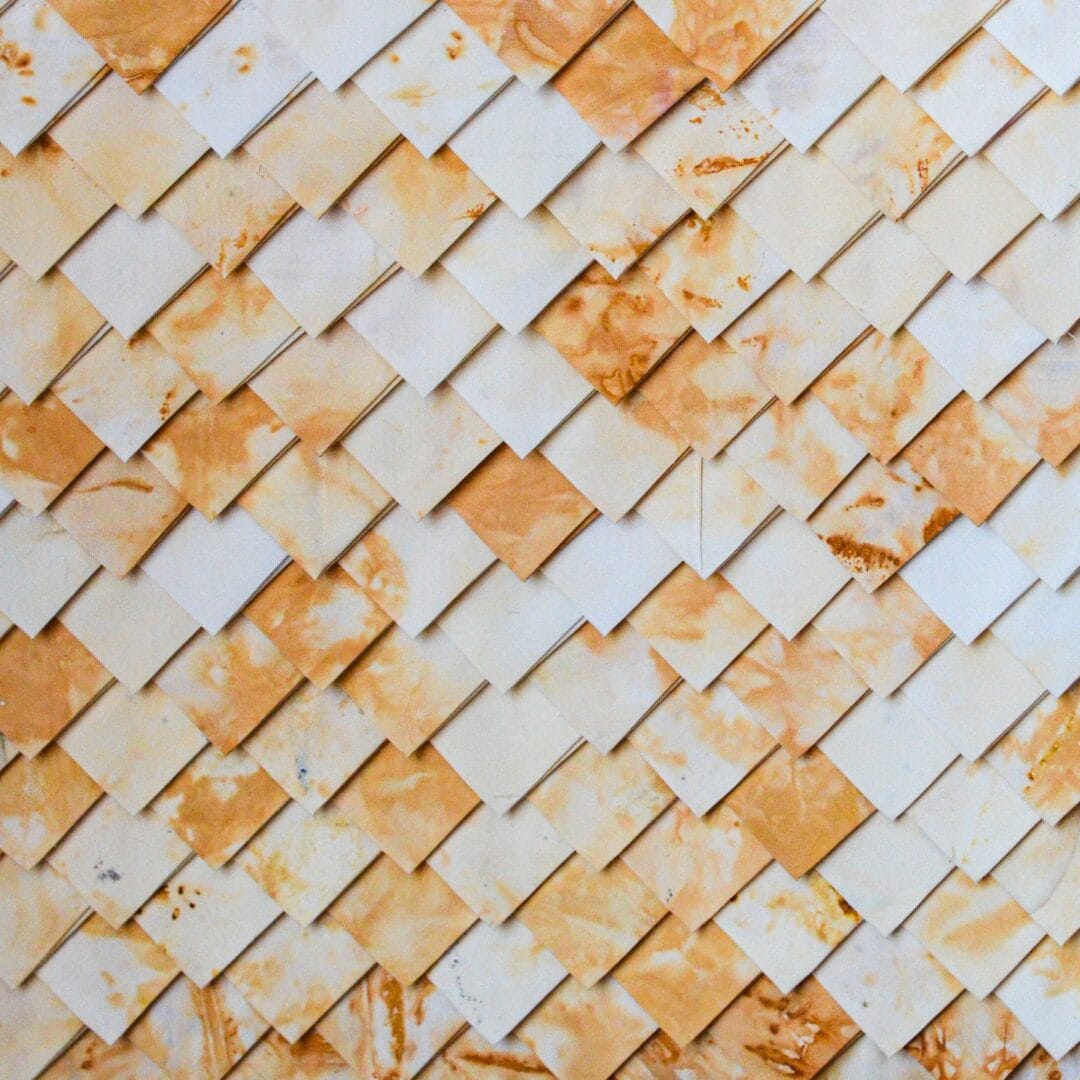
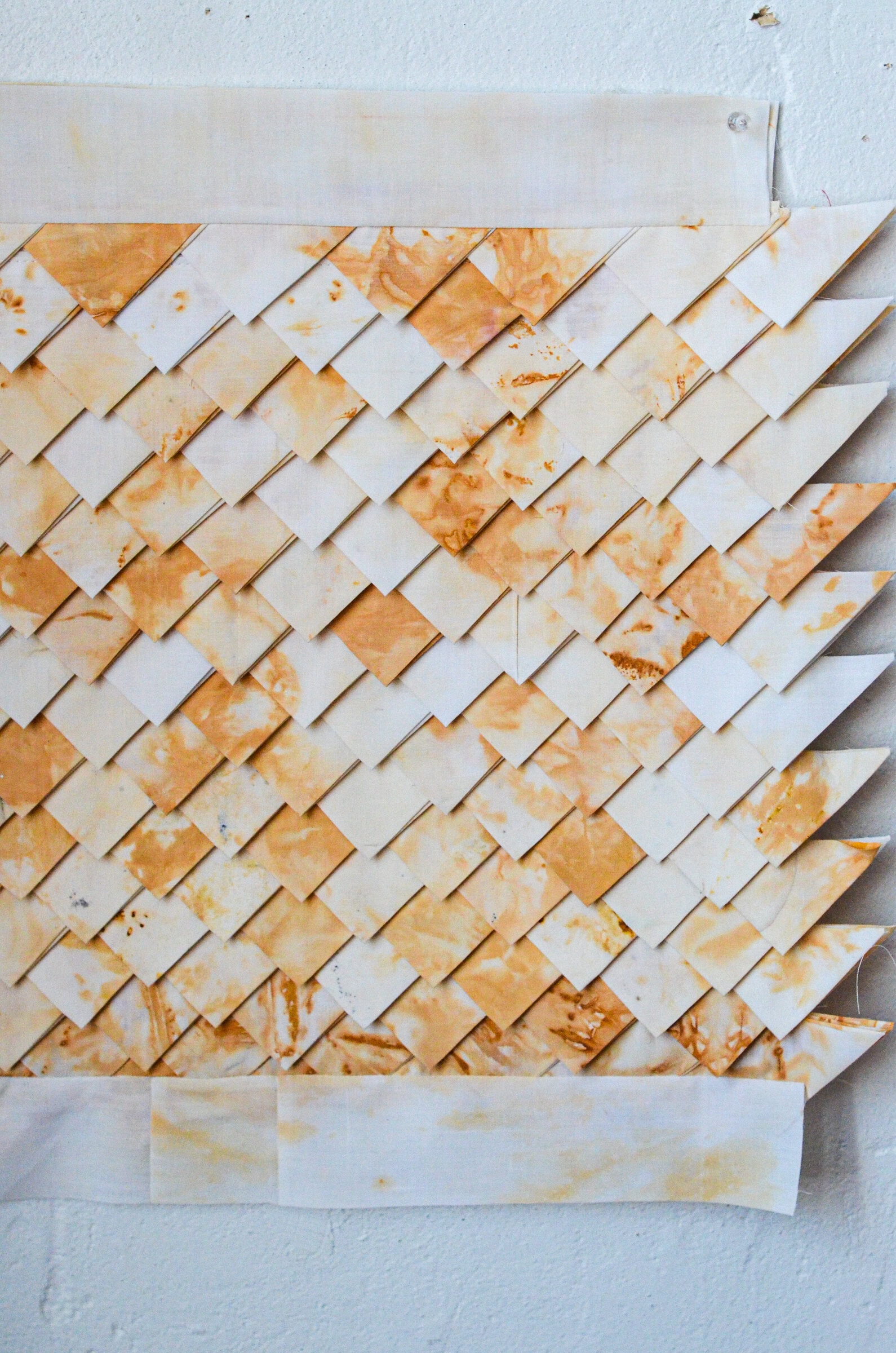
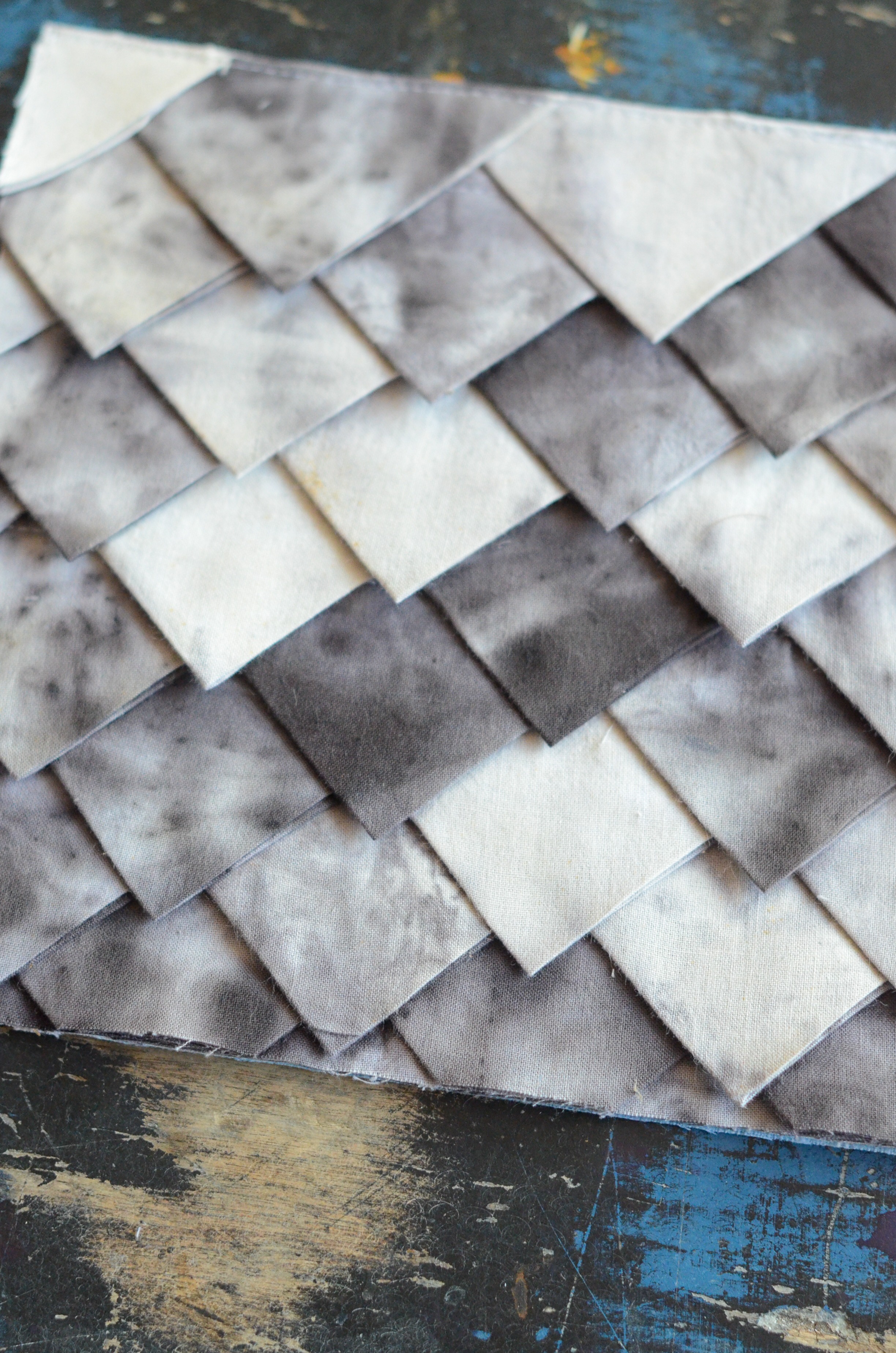
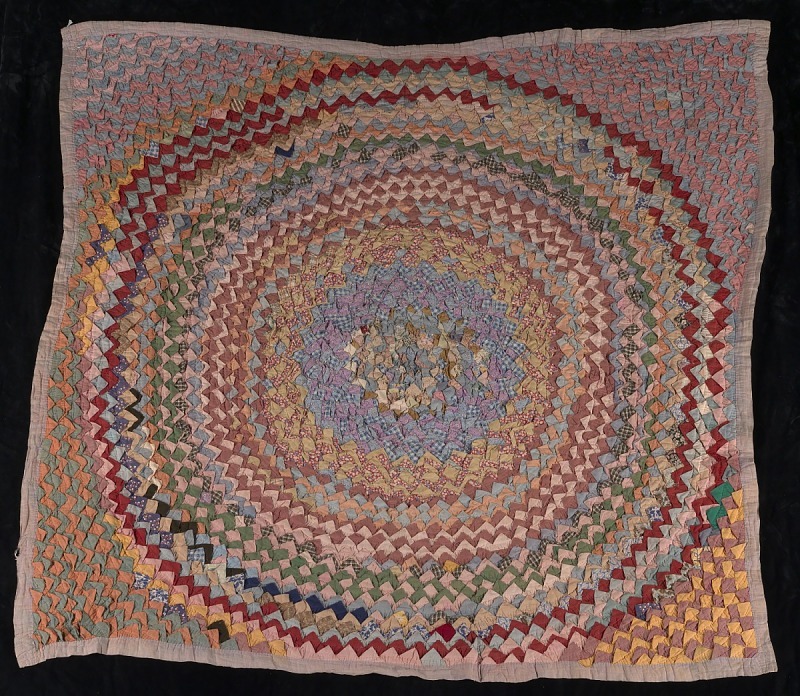
The Pine Burr Quilt is a unique, textured quilt made from many different folded triangles that are then sewn to foundation fabric in varying patterns. There are many design choices to make, from fabric color, fabric texture, pine burr spacing, and framing techniques, and the resulting quilt – either sewn in rows or in a circular pattern – is a sculptural, individual quilt block that reflects the maker’s hand.
The Pine Burr Quilt is also known by many different names with many variations, like Pine Cone Quilt, Somerset Star, and others. There are geographic variations that exist across the country, with specific kinds made in Florida, and the Lumbee Pinecone made by the Lumbee Tribe in North Carolina.
The Pine Burr Quilt became the State Quilt of Alabama in 1997, largely due to its popularity among Southern African American quilters. The official Pine Burr quilt in the state archives was made by Loretta Pettway Bennet of Gee’s Bend.
Dates
Friday, July 28th, 2023
Time
12pm – 2:30pm ET*
Location
Zoom, a link will be sent to participants the day before class
Cost
$60 for the individual class, $350 for the series
*This session will be recorded. A link to the recording will be emailed to all those who register following the live session. This link is live for one month for you to watch at your convenience.
SUGGESTED CLASS MATERIALS
- Two yards of 40-inch fabric, of any pattern and color you want! You can mix and match or make it monochromatic.
- A 12-inch square of foundation fabric to sew your pine burrs down.
- Glue stick (or pins, but Aaron prefers glue basting)
- Any type of hand-stitching thread you are comfortable with!
- Needle (a sharp, longer needle is best for sewing through several layers at once)
- Ruler
- Marking tool
Not required but helpful:
- Cutting Mat
- Rotary Cutter
- Iron
- Quilting ruler
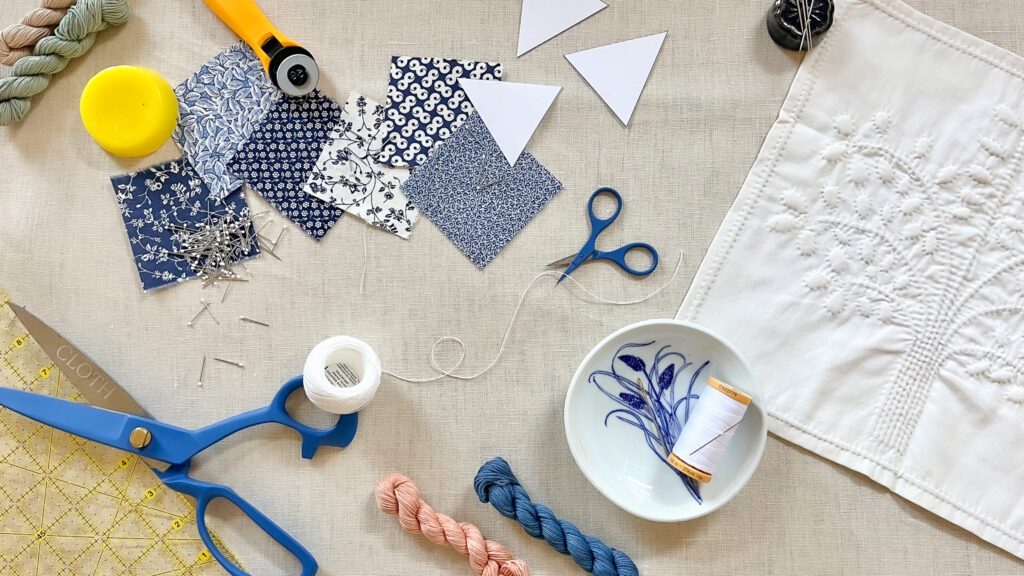
Need materials? Purchase a Tatter-curated materials kit!
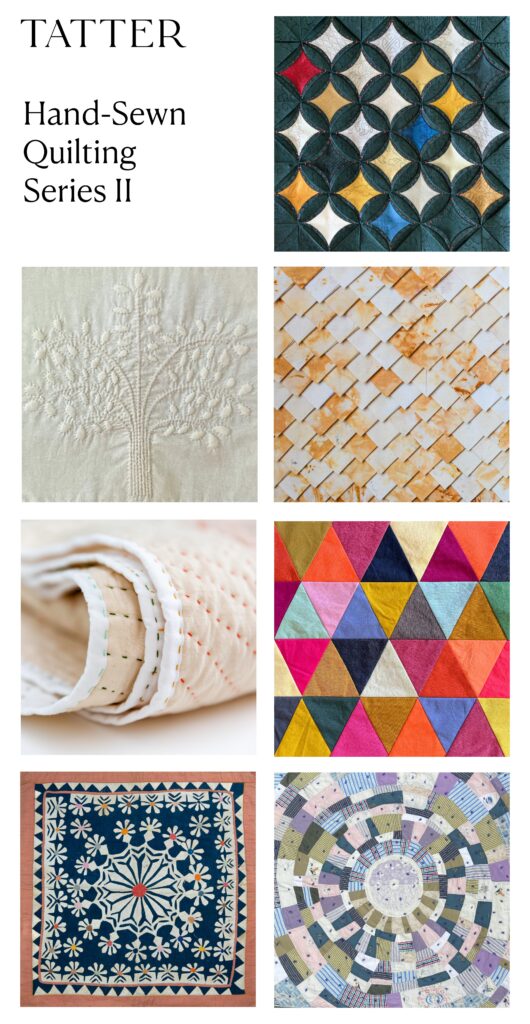
This class is part of the Hand-Sewn Quilting Primer II Series.
Perfect for the beginner and the seasoned quilter alike (and perfect if you’ve already joined our Hand-Sewn Quilting Primer Series), the Hand-Sewn Quilting Series II takes students on a journey of different forms of hand-sewn quilt construction, from Korean Yeouijumunbo to English Paper Piecing. Rooted in the diverse history of quilting and taught by contemporary textile artists, this series combines enduring quilting techniques with new voices and approaches.
Beginners will come away with a newfound confidence in their quilting ability and a deeper understanding of the medium. More experienced makers will expand their textile horizons, as well as gaining new skills to use on personal projects. Experiencing the series as a whole is sure to provide a comprehensive foundation and will get you well on your way in a joyful practice of hand-sewn quilting.
The projects from each class can be combined into a sampler commemorating your textile journey or can be displayed individually as pillows or patches applied onto another textile.
We hope you will join us for all seven of our quilting classes to experience new ways of quilting and broaden your knowledge of textile history. You can sign up for the entire series, or choose your own adventure by selecting the classes you’re most interested in.
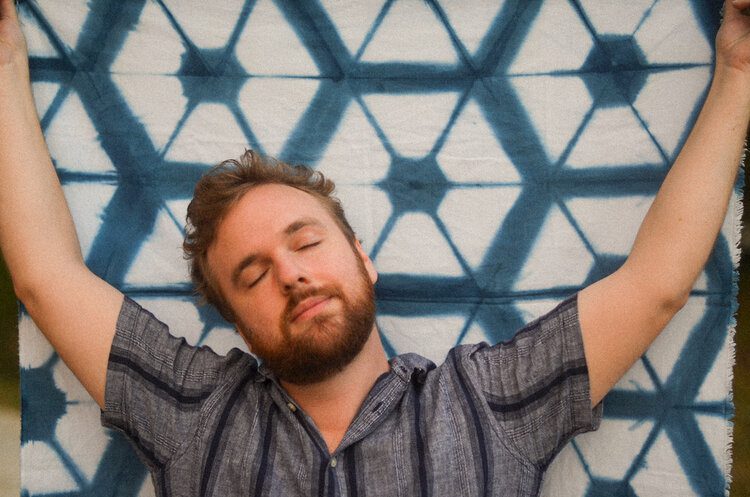
OUR TEACHER
Aaron Sanders Head
Aaron Sanders Head is a Southern, Alabama-based textile artist. Aaron was raised in rural Grady, AL and Hope Hull, AL, as the youngest of three children from an artist mother and an agricultural worker father. His grandparents were both rural mail carriers, and the times Aaron spent accompanying them on those trips cemented early on a fondness for rural areas and the importance of connection however it can be found. That learned sense of observation combined with inherited family traditions of textile and agriculture inform the unique visual language Aaron works in today, that exists in the worlds of quiltmaking, handwork and natural dyes. Aaron creates quilts and hand-stitched, naturally dyed textiles that explore the lived experiences of rural Alabamians and the bonding traditions that hold rural communities together.
